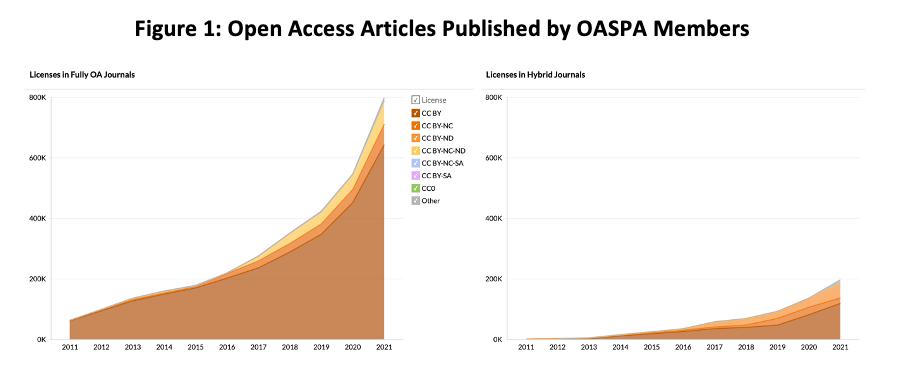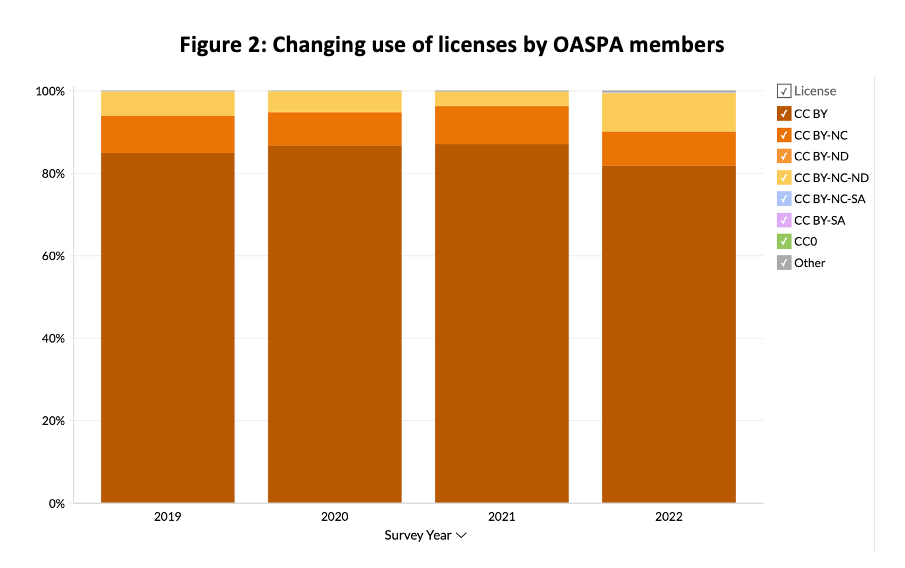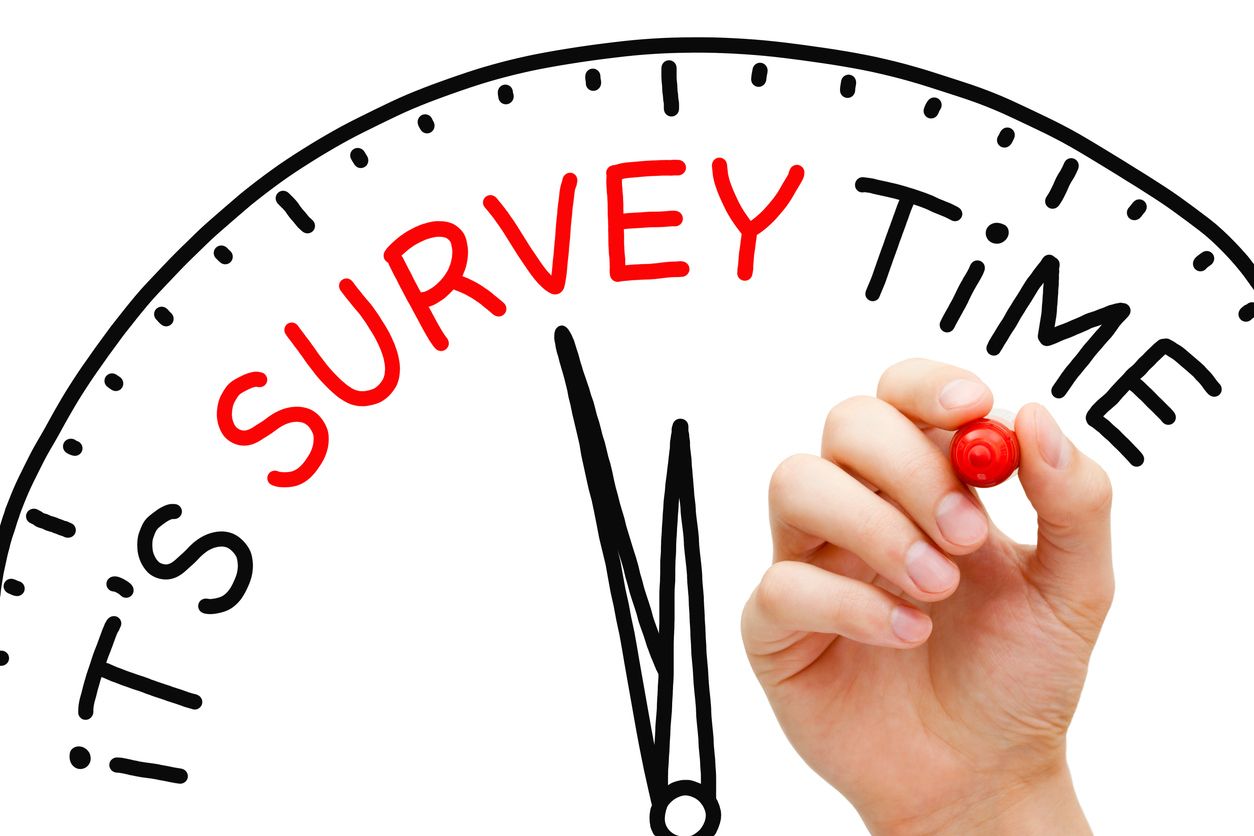News & Views: OASPA Open Access License Types

At this time of year, we review patterns in the licenses attached to open access publications. This year, we will look at the changing balance of license use among OASPA members and explore how different publishers place difference emphasis on different license types.
Introduction
Each year OASPA surveys its member organizations to gather information about the volumes of output they publish in their fully OA and hybrid journals, under various license types. We’re delighted to be working with OASPA on its survey again this year. We process the raw data into consistent categories, normalize publisher names, and create visualizations of the data over time. We also produce a yearly blog post for OASPA, outlining some of the results.
Our underlying analysis of the OASPA data covers much more than we can fit in their one blog post, so we explore the data a little more here. Subscribers to our OA Data and Analytics tool can explore the data further still. It provides a complementary view into our market-wide analysis.
As we examined last year, Creative Commons (CC) licenses have become the de facto standard for open access publications. They account for over 98% of OASPA members’ current OA output, and almost 94% of OA output indexed in Crossref. We therefore focus on CC licenses in our analysis here.
Growth in OASPA’s Coverage
The volume of output produced by OASPA members has grown significantly in recent years. The charts below examine this.

Source: OASPA, Delta Think Analysis. © 2023 Delta Think Inc. All rights reserved.
The charts show numbers of articles published in fully OA journals (left), and OA articles in hybrid journals (right), color-coded by license type. The most permissive licenses are at the bottom (CC BY), through to least permissive at the top, except for the tiny amount of CC0.
- The volume of publications from OASPA continues to grow. Just under 4M articles were published by members in the period 2000-2021.
- Just under 1M of the cumulative total were published in 2021, representing a growth of around 46% over the previous year and around one quarter of total recorded output.
- The total number of articles reported by members has more than doubled since 2018, and grown around 20x over the last decade.
- Publications in fully OA journals continue to dominate output, at around 4x that in hybrid.
- CC BY licenses (Creative Commons attribution only) dominate. They account for almost three quarters of members’ total output, and for 81% of their output in fully OA journals.
Changing make-up of membership
The growth in OASPA members’ output in 2021 is higher than our estimate of the market’s underlying growth in OA output of 32%. This is most likely driven by new members joining OASPA in 2021/2022 and adding their data retrospectively to the overall numbers. We estimate new members boosted output of OASPA members measured over all time by roughly 25%.
OASPA membership covers a different sample of publishers to our market estimates, so comparing growth between the two is not a like-for-like comparison. However, we can see how OASPA’s evolving membership influences the composition of its output.

Source: OASPA, Delta Think Analysis. © 2023 Delta Think Inc. All rights reserved.
The chart above compares snapshots of license usage by OASPA members totalled across all years they supplied data for (dating back to 2000 for some). Each bar represents the results of the survey conducted in the year indicated. Surveys include cumulative data up to the full year before they were conducted. So, e.g., the 2022 survey (right-most bar) covers output up to end of 2021.
Patterns in use had seen only a slight movement up until the most recent survey:
- CC BY licenses dominate, growing slightly to just over 86% of output by 2021.
- CC BY-NC licenses (non-commercial use) grew slightly to just over 9% of output by 2021.
- CC BY-NC-ND (non-commercial, no derivatives) share fell back to 3.5% by 2021.
2022’s data then shows more notable changes:
- CC BY fell back to “only” 81% of output, having been displaced by more restrictive licenses.
- CC BY-NC fell back slightly to 8.2%
- CC BY-NC-ND has more than doubled to 9.3% share.
Other license types remain negligible, at less than one percent share.
Conclusion
Comparisons between OASPA survey data and Delta Think’s market data are not strictly like-for-like as each represents different samples and methods. However, they set a useful context.
In 2021, OASPA members published around 1M OA articles, which compares with our market-wide estimate of 1.2M. With all four of the largest corporates as members, and given our highly consolidated market, this large overlap is not surprising.
The focus of OASPA’s members is, of course, reflected in their use of licenses. Three quarters of OASPA members’ output falls under CC BY, compared with around 55% of the total OA market. The three most-used licenses by far are CC BY, BY-NC, and BY-NC-ND. They account for over 99% of OASPA members’ output between them, compared with around three quarters of the wider OA market.
New members have joined OASPA over time and have retrospectively added data. Their different approaches to licensing therefore influence the trends we see. Born-OA publishers largely use the most permissive CC BY license and have been the historical bedrock of OASPA membership. Springer Nature and Wiley have both acquired big born-OA publishers, and Springer Nature has its born OA megajournals. The combination of all this has likely been a big factor in tilting historical OASPA output towards high levels of CC BY. With Elsevier joining in 2022, we now see things tilting back towards market averages, and a greater prominence of the more restrictive CC licenses. (It’s also interesting to note that Elsevier has now embraced Creative Commons licenses, and its own license now appears largely reserved for archive content.)
As more publishers – especially the larger societies – explore moves to becoming OA, it will be interesting to see if OASPA’s membership continues to grow, and whether we’ll see the changes in 2022 become the start of a trend, or just a temporary realignment.
This article is © 2023 Delta Think, Inc. It is published under a Creative Commons Attribution-NonCommercial 4.0 International License. Please do get in touch if you want to use it in other contexts – we’re usually pretty accommodating.













